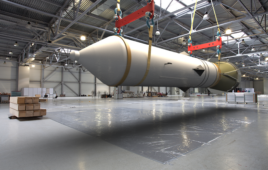With policymakers looking for hard evidence to demonstrate the effectiveness of federal programs, a new study of federal patent output by the Battelle Technology Partnership Practice (TPP) provides some new insight into certain federal research programs and their substantial role in generating growth-enhancing innovations.
Patents remain a catalyst for innovation-based job growth, with 75% of executives at venture capital-backed startups reporting that patents are critical for attracting investors. Since startups are responsible for almost all the new jobs created in the United States since 1977, ensuring a robust pipeline of patentable innovations continues to be a top bipartisan priority for net job creation.
According to a new analysis of patent output across various federal agencies from 2000-2013, completed by Battelle TPP, the R&D programs at the National Institutes of Health, the National Science Foundation (NSF), the Department of Energy (DOE) and the National Institute for Standards and Technology (NIST) are particularly productive patent generators.
Perhaps contrary to widespread beliefs among policymakers, R&D programs from the Department of Defense (DOD) were one of the least efficient at producing new patents from public research dollars.
With spending caps still in place due to the Budget Control Act (BCA) for both non-defense discretionary programs and defense discretionary programs, there have been discussions among members of Congress to cut back on non-defense spending in order to finance increases for defense spending.
However, the Battelle report finds that, “most non-defense discretionary programs generated two to five times more patents for every $100 million in research and development funding than defense-related programs. While all research programs are doing laudable work, any shifts in funding from non-defense programs to defense programs should at first assess the aggregate impact on patent output.”
“This study clearly shows the drawbacks of sequestration in an evidence-based way,” said Reneé Cruea, Executive Director the Academy of Radiology Research. “Just this week before a House Appropriations Subcommittee, we heard the NIH Director acknowledge that other countries are catching up to the U.S. in the race for biotechnology patents. The fastest way to reverse this disturbing trend is to find an alternate fiscal path to the unworkable policy of sequestration, and ensure that we don’t have to sacrifice highly innovative programs to finance another.”
While innovation outputs across NIH vary depending on mission, goals, etc., the NIH produced an average of 5.9 patents per $100 million in R&D expenditures from 2000-2013 (chart in Executive Summary). NSF was found to produce 10.4 patents per $100 million in research funding, while DOE and NIST averaged approximately 8.7 patents per $100 million. DOD R&D programs averaged 2.5 patents per $100 million.
Overall, two programs at the NIH – the National Institute of Biomedical Imaging and Bioengineering (NIBIB) and the National Institute of General Medical Sciences (NIGMS) – were found to be the strongest producers of new intellectual property across all federal R&D programs studied, generating 24.9 and 13.4 patents per every $100 million in R&D respectively, or just $4 million and $7.4 million per invention. (chart page 23 of report)
Notably, NIBIB’s rate was nearly as efficient as the private sector, which averages $3.5 million in R&D costs per patent.
Looking at the quality of federal patents – which can be estimated by how far right an agency is on the chart below – NIH patents also averaged 5.14 forward citations. It is important to note that “citations” are not an abstract bibliographical reference used by patent agencies, but rather represent subsequent patent filings that reference the original federal patent as integral to its work.
From a policy perspective, they signify future successful lines of R&D beyond the original federal investment – including millions of dollars of high-skilled job support – which policymakers should view as an important and understudied aspect of innovation policy. According to the report, “this metric may [actually] underestimate the true impact on downstream R&D activity, since it would fail to capture subsequent lines of R&D that did not actually produce an additional patent. While this may have been a failure from the company’s perspective, it nevertheless led to high-skilled high-wage employment opportunities – a success from the policy perspective.”
Modeling the rate and downstream quality of patent production, the study estimates that the NIH is an integral part of the knowledge chain for $105.9 million in downstream R&D for every $100 million in taxpayer funded awards. These downstream connections represent other research organizations, in both the private and public sector, leveraging NIH discoveries into follow-on R&D spending that is equal to the original federal investment.
NIH’s technology-centric Institute, NIBIB, also led the way in total downstream R&D activity across the federal government, generating $578.2 million for every $100 million in R&D expenditures. Other estimates showed that NIST averaged $351.7 million, the NSF averaged $330 million, DOE returned $272.2 million, NHGRI averaged $263.4 million, and the DOD averaged $74.7 million.
“All R&D programs are doing great science; with success rates at historical lows, if you are awarded funding, your colleagues decided through the peer review process that you’re doing quality work. So this isn’t a question of which programs are the most meritorious,” said Cruea. “But if policymakers are interested in generating more high-skilled jobs, they should acknowledge the highly innovative nature and tangible returns from programs such as those at NIH, NSF, NIST, DOE and others, and place them on a predictable and sustainable budget path. That would represent an evidence-based policy to stimulate job creation for decades to come.”
Filed Under: Aerospace + defense




